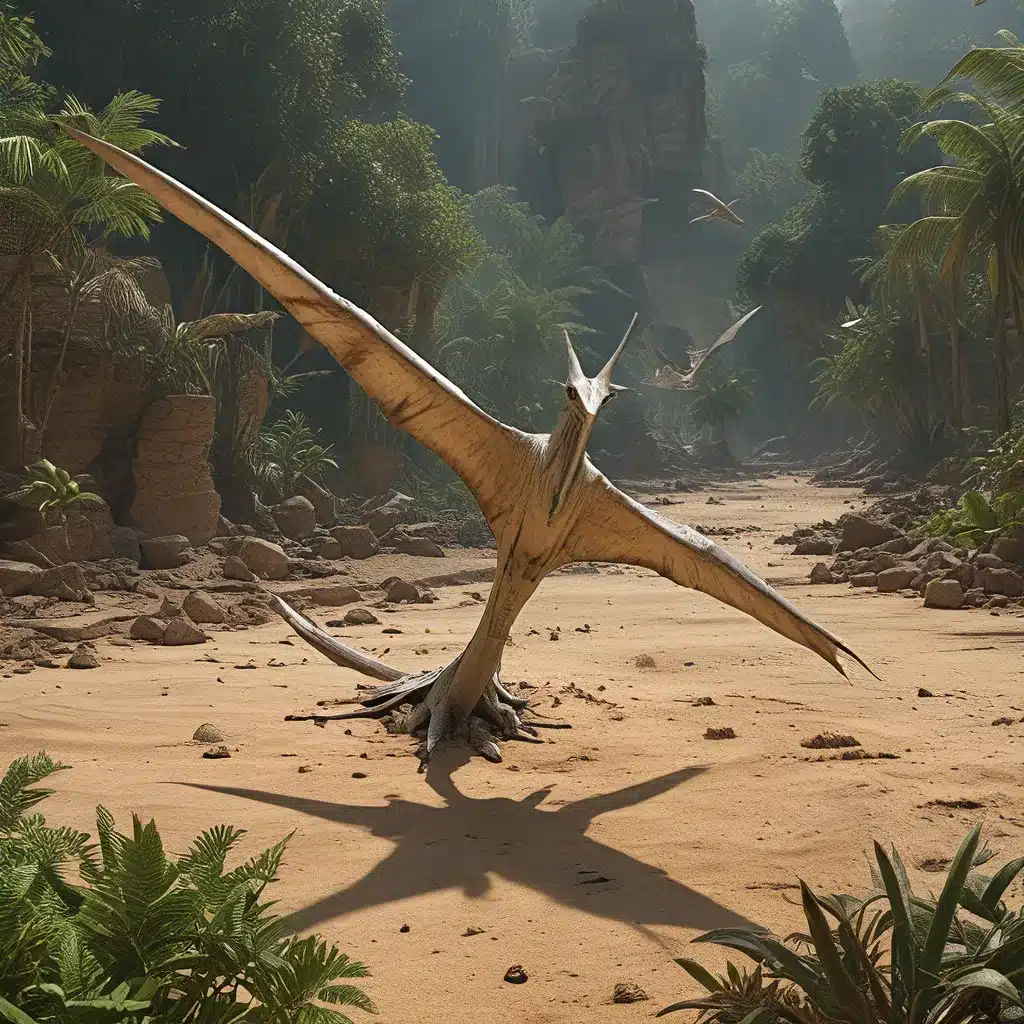
Unraveling the Mysteries of the Largest Prehistoric Flying Reptiles
In the remote wilderness of Romania, a remarkable discovery has shed new light on the extraordinary pterosaurs, the flying reptiles that once soared over the skies of the prehistoric world. The recent unveiling of the skeleton of the biggest pterosaur ever discovered has captivated the global scientific community, sparking a surge of interest in these enigmatic creatures and the lost civilizations that may have once shared their domain.
Dracula Takes Flight: The Colossal Pterosaur Fossil
On a fateful day in March 2023, the Altmühltal Dinosaur Museum in Bavaria, Germany, unveiled a truly astonishing find – the skeletal remains of a pterosaur that would have been nothing short of awe-inspiring when it roamed the Earth some 66 million years ago. Nicknamed “Dracula” after the legendary vampire of Transylvania, this behemoth of a creature stood as tall as a giraffe and weighed an estimated 500 kilograms (1,100 lbs), with a wingspan that stretched an incredible 12 meters (39 feet).
The discovery of this colossal pterosaur fossil in Romania, a region historically associated with the Dracula legend, has sent shockwaves through the paleontological community. Paleontologists describe their profound sense of shock and wonder at the sight of this remarkable specimen, which has challenged long-held assumptions about the capabilities of these prehistoric flying reptiles.
As researchers delve deeper into the fossil’s secrets, a heated debate has erupted over the true nature of the giant pterosaurs, with some scientists questioning whether these massive creatures were truly capable of sustained flight.
The Great Debate: Could Dracula Really Fly?
Pterosaurs, the winged reptiles that soared alongside the dinosaurs, have long been considered the first true flying animals. Their lightweight, hollow bones, and expansive wing membranes made them pioneers of non-insect flight. However, the discovery of the colossal “Dracula” fossil has sparked a scientific tug-of-war over the true flight capabilities of the largest pterosaur species.
One school of thought argues that the sheer size and muscular build of Dracula and other giant pterosaurs would have made sustained flight nearly impossible. Their thick, human-sized neck bones and heavy bodies, the reasoning goes, would have required an improbable amount of muscle power to lift off and remain airborne for extended periods. The laws of physics, they contend, simply would not have allowed these behemoths to take to the skies.
In contrast, a competing theory suggests that the large pterosaurs were indeed capable of flight, at least in their younger, more agile years. As they aged and gained weight, the argument goes, these creatures may have transitioned to a more land-based existence, becoming the apex predators of their island habitats, much like the modern ostrich.
This ongoing debate highlights the fragility of the pterosaur fossil record and the challenges faced by paleontologists in reconstructing the true capabilities of these ancient flying reptiles. With their delicate, hollow bones, pterosaur remains are notoriously difficult to preserve, leaving much room for interpretation and speculation.
Uncovering the Lost City of the Pterosaurs
As the debate over Dracula’s flight abilities rages on, the discovery of this colossal pterosaur fossil has also opened up new avenues of exploration into the lost civilizations that may have once coexisted with these magnificent creatures.
The Lost Kingdoms, a team of intrepid archaeologists and historians, has been investigating the possibility that the remote region of Romania where Dracula was found may have once been home to a thriving ancient society that shared a symbiotic relationship with the giant pterosaurs.
Excavations in the area have already unearthed evidence of a sophisticated culture, including intricate pottery, advanced tools, and even the remains of larger carnivorous dinosaurs – potential prey for the mighty Dracula. These findings suggest that the “Lost City of the Pterosaurs” may have been a vibrant hub of human-pterosaur interaction, where the colossal flying reptiles played a central role in the lives and beliefs of the ancient inhabitants.
The Significance of the Pterosaurs
The discovery of the Dracula fossil and the potential lost civilization it has uncovered highlight the remarkable significance of the pterosaurs in the broader context of prehistoric life. These winged reptiles were true pioneers, pushing the boundaries of what was thought possible in the animal kingdom.
Pterosaurs were the first vertebrates to evolve true powered flight, a feat that would not be replicated until the emergence of modern birds millions of years later. Their adaptation of wing membranes and lightweight skeletal structures paved the way for the evolution of avian flight, transforming the skies and the dynamics of predator-prey relationships in the ancient world.
Moreover, the pterosaurs’ potential role in the lives of ancient human civilizations underscores their profound impact on the cultural and spiritual beliefs of our ancestors. As the “Lords of the Sky,” these majestic creatures may have been revered, feared, or even worshipped by the inhabitants of the Lost City, their very existence shaping the worldview and mythologies of the past.
Uncovering the Secrets of the Past
The ongoing exploration of the Dracula fossil and the potential Lost City of the Pterosaurs represents a thrilling new chapter in the annals of prehistoric discovery. As paleontologists and archaeologists work tirelessly to unravel the mysteries of these ancient realms, the world holds its breath, eager to witness the unveiling of long-lost civilizations and the rewriting of our understanding of the prehistoric world.
Through the lens of the Dracula fossil and the Lost City, we are granted a rare glimpse into the profound and intricate relationships that once existed between humans and the natural world, a world dominated by the magnificent, if enigmatic, pterosaurs. It is a testament to the power of human curiosity and the relentless pursuit of knowledge that these stories of the past continue to captivate and inspire us, pushing the boundaries of what we know about our shared evolutionary journey.


